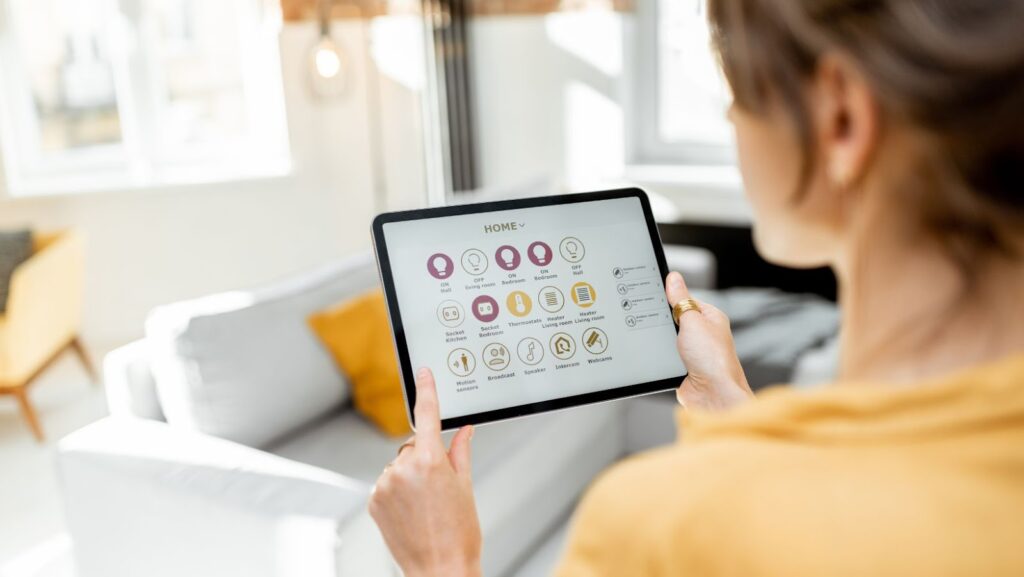In today’s fast-paced world, the concept of a smart home has transitioned from a luxury to a practical and increasingly necessary part of our daily lives. Smart home automation not only offers convenience but also enhances energy efficiency and security, making it a compelling option for homeowners. From voice-activated assistants to automated lighting systems, the possibilities are endless and can transform ordinary living spaces into cutting-edge, intelligent environments.
Benefits of Smart Home Automation
Smart home automation elevates the functionality of living spaces, turning them into more proactive, efficient environments. It leverages technology to enhance daily life by focusing on security, energy management, and comfort.
Enhanced Security Features
Smart home systems improve residential security through sophisticated technologies. Integrating alarms, cameras, motion detectors, and smart locks, these systems enable homeowners to monitor their property remotely via smartphones or computers. Real-time alerts inform homeowners of any unusual activity, no matter their location, increasing the response time to potential threats. For example, smart doorbells with cameras allow homeowners to see and communicate with visitors without opening the door, adding an extra layer of security.

Energy Efficiency and Savings
Smart home automation plays a crucial role in energy conservation. Automated thermostats adjust the temperature based on daily schedules and weather conditions, optimizing energy use and reducing utility bills. Smart lighting systems, which turn off lights in unoccupied rooms, also contribute to significant energy savings. According to studies, such automated systems can cut household energy bills by up to 25%, demonstrating their effectiveness in managing consumption.
Convenience and Comfort
Automation significantly enhances the convenience and comfort of home environments. Voice-activated devices allow residents to control lighting, temperature, and media systems with simple commands. For individuals with mobility challenges, automation provides an essential service by enabling easy control of home functions.
Popular Smart Home Automation
Smart Lighting Systems
Smart lighting systems offer the dual benefits of convenience and energy savings. Users can control these systems remotely via smartphone apps, allowing them to adjust lighting based on time of day, occupancy, or mood. Systems like Philips Hue or LIFX integrate with smart home assistants for seamless voice control, providing both functionality and an enhanced aesthetic vibe. Automated lighting can reduce overall household energy usage by adjusting the brightness according to natural light levels or turning off lights in unoccupied rooms.
Automated Thermostats
Automated thermostats like the Nest Learning Thermostat or Ecobee adapt to user habits and adjust temperatures accordingly, maximizing comfort while minimizing energy consumption. These devices learn the homeowner’s schedule and temperature preferences, making automatic adjustments that can cut heating and cooling bills by up to 23%. They also allow remote temperature control, offering users the ability to adjust their home’s climate from their smartphones before arriving home.

Intelligent Security Cameras and Alarms
Security enhancements through intelligent cameras and alarms provide homeowners with peace of mind. Devices such as the Ring Security Camera and Google Nest Cam offer high-definition video surveillance that can detect motion and send real-time alerts to a user’s phone. These systems often include features like facial recognition, night vision, and integrated sirens.
Choosing the Right Smart Home Devices
Assessing Compatibility
Ensure compatibility with existing devices. Many smart home systems require a central hub that connects various devices such as lights, thermostats, and security systems. Checking that new devices can communicate effectively with existing systems prevents redundancy and enhances functionality. For instance, choosing devices that are compatible with Apple HomeKit, Google Assistant, or Amazon Alexa can provide centralized control and integration.
Prioritizing Essential Features
Focus on devices that offer the most value. If security is a priority, investing in smart locks and advanced security cameras might be the first step. For energy management, smart thermostats and energy-efficient lighting systems could take precedence. It’s vital to prioritize devices that meet the most pressing needs first.
Considering Scalability
Plan for future expansion. Smart homes evolve with changing technological trends, so selecting devices that are scalable and upgradeable ensures longevity and adaptability. Opting for systems that allow easy additions and upgrades can accommodate future enhancements without necessitating a complete overhaul.